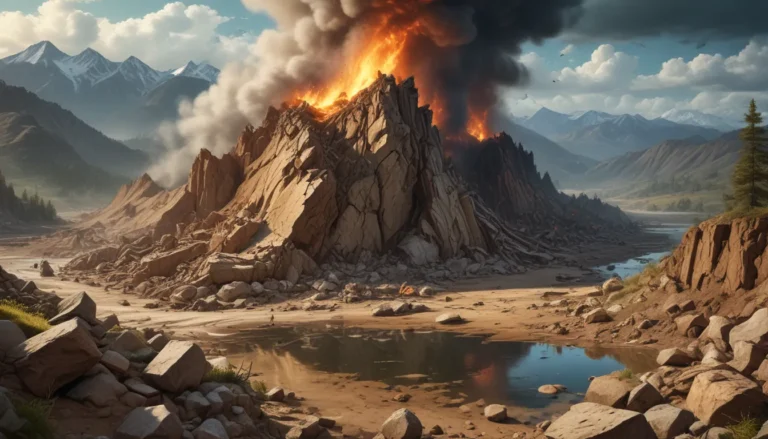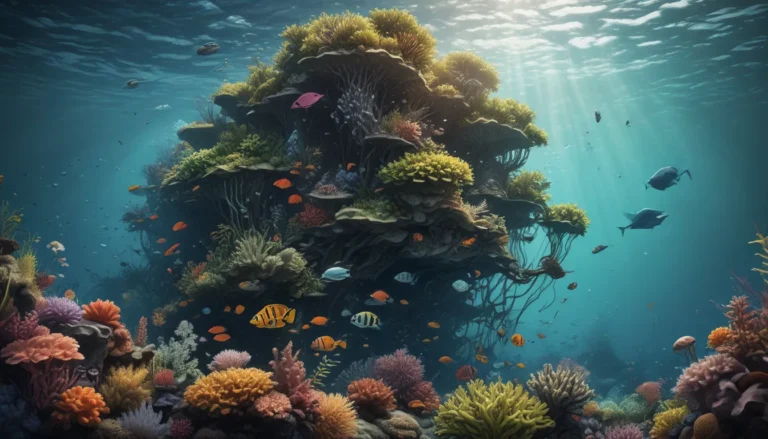A Note About Images: The images used in our articles are for illustration purposes only and may not exactly match the content. They are meant to engage readers, but the text should be relied upon for accurate information.
As we navigate the complexities of environmental issues, one concerning topic that demands our attention is tropospheric ozone depletion. This phenomenon, also known as ground-level ozone depletion, poses significant risks to our planet and its inhabitants. Ozone, a vital component of Earth’s atmosphere, plays a crucial role in shielding us from harmful ultraviolet radiation. However, a combination of human activities and natural processes has led to a steady decline in tropospheric ozone levels.
In this article, we will delve into 14 mind-blowing facts about tropospheric ozone depletion to enhance your knowledge of this environmental challenge. From the root causes and consequences to potential solutions, each fact will provide valuable insights into the urgency of addressing this issue collectively. Are you ready to embark on a journey of discovery, gaining a deeper understanding of ozone depletion and its impacts? Prepare to be inspired and motivated to take action in safeguarding our precious ozone layer.
Understanding Tropospheric Ozone Depletion
Let’s start by unraveling the core facts about tropospheric ozone depletion and its impact on the environment:
- Tropospheric ozone depletion is primarily driven by human activities, especially the release of pollutants like chlorofluorocarbons (CFCs) into the atmosphere. These pollutants undergo reactions in the presence of sunlight, leading to the breakdown of ozone molecules.
- The ozone layer serves as a critical shield against harmful ultraviolet (UV) radiation, which can cause health issues in humans, such as skin cancer and cataracts, and harm marine ecosystems. The decline in the ozone layer results in increased UV radiation reaching the Earth’s surface, posing risks to both human health and the environment.
- Notably, the largest ozone hole is observed over Antarctica, particularly during the Antarctic spring, due to unique atmospheric conditions and the presence of human-made pollutants. This phenomenon underscores the global nature of ozone depletion.
Impacts of Tropospheric Ozone Depletion
Let’s explore the wide-ranging impacts of tropospheric ozone depletion on various aspects of our planet:
- Tropospheric ozone depletion significantly affects air quality, with high levels of ground-level ozone leading to respiratory issues, eye irritation, and smog formation. Urban areas with elevated pollution levels are particularly at risk.
- Furthermore, ozone depletion contributes to climate change, as ozone is a potent greenhouse gas. Its reduction in the troposphere influences temperature patterns, atmospheric circulation, and climate variability, exacerbating the challenges of global warming.
- The consequences of tropospheric ozone depletion extend to plant growth and agriculture, with elevated surface ozone levels damaging plant tissues, reducing photosynthesis, and inhibiting crop productivity. This poses significant threats to food security and agricultural systems.
- Marine life is also impacted by ozone depletion, as higher UV radiation levels penetrating the ocean surface can harm phytoplankton and other marine organisms. This disruption can disrupt the marine food chain and lead to ecological imbalances.
Addressing Tropospheric Ozone Depletion
In response to the urgent need to address tropospheric ozone depletion, various measures and initiatives have been implemented:
- The Montreal Protocol, established in 1987, stands as a landmark international agreement aimed at phasing out ozone-depleting substances. This treaty has successfully reduced the production and release of harmful pollutants, leading to gradual healing of the ozone layer.
- Continued monitoring of ozone levels, understanding the factors contributing to ozone depletion, and tracking progress in ozone recovery are vital for managing and mitigating its impacts. Global cooperation and public awareness are essential in addressing this global environmental issue.
- Technological advancements have paved the way for safer alternatives to ozone-depleting substances in industries such as refrigeration, air conditioning, and aerosol production. Embracing these alternatives is crucial for reducing our environmental footprint.
- Public awareness and education play a key role in addressing tropospheric ozone depletion, as informed individuals can advocate for sustainable practices, responsible choices, and support for environmental policies. Each one of us has a part to play in preserving our planet for future generations.
Conclusion: Taking Action for a Sustainable Future
In conclusion, tropospheric ozone depletion presents a critical environmental challenge with profound consequences. By understanding the complexities of this issue and the impacts it has on human health, ecosystems, and climate, we are better equipped to take meaningful action.
From reducing emissions of ozone-depleting substances to supporting sustainable practices and advocating for environmental policies, each of us has a role to play in protecting our ozone layer and safeguarding the health of our planet. Together, let’s commit to addressing tropospheric ozone depletion through collective efforts, global cooperation, and a shared commitment to environmental stewardship.
FAQs: Exploring Key Questions about Tropospheric Ozone Depletion
- What is tropospheric ozone depletion?
-
Tropospheric ozone depletion refers to the reduction in ozone concentration in the lower part of Earth’s atmosphere, primarily caused by human-made pollutants like CFCs and HCFCs.
-
How does tropospheric ozone depletion affect human health?
-
Tropospheric ozone depletion can worsen respiratory conditions, increase the risks of cardiovascular diseases and skin cancer, and pose health hazards to humans.
-
Are there unexpected locations experiencing ozone depletion?
-
Yes, ozone depletion has been observed in various regions, including the Arctic and urban areas with high pollution levels, underscoring the global impact of this issue.
-
What are the impacts of tropospheric ozone depletion on ecosystems?
-
Ozone depletion can harm plant growth, crop productivity, and marine ecosystems, disrupting food chains and ecological balance.
-
How can we address tropospheric ozone depletion?
- Addressing tropospheric ozone depletion requires reducing emissions of ozone-depleting substances, adopting sustainable practices, and supporting international agreements aimed at protecting the ozone layer.
In exploring these questions and understanding the nuances of tropospheric ozone depletion, we can pave the way for a more sustainable future grounded in environmental consciousness and responsible action.
Join Us in Protecting Our Planet
Our shared commitment to safeguarding the environment and promoting sustainability guides us in delivering trustworthy and engaging content that empowers individuals to make informed choices. Every fact we share is a contribution from real users like you, ensuring diverse insights and reliable information. As you embark on your journey of learning and discovery, trust in our dedication to quality, accuracy, and authenticity as we navigate the path towards a greener, healthier planet together.






